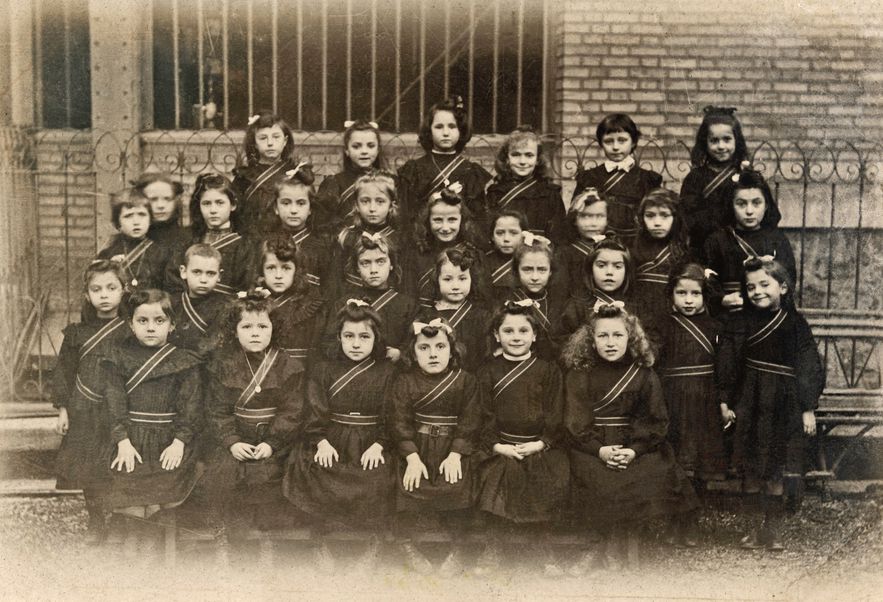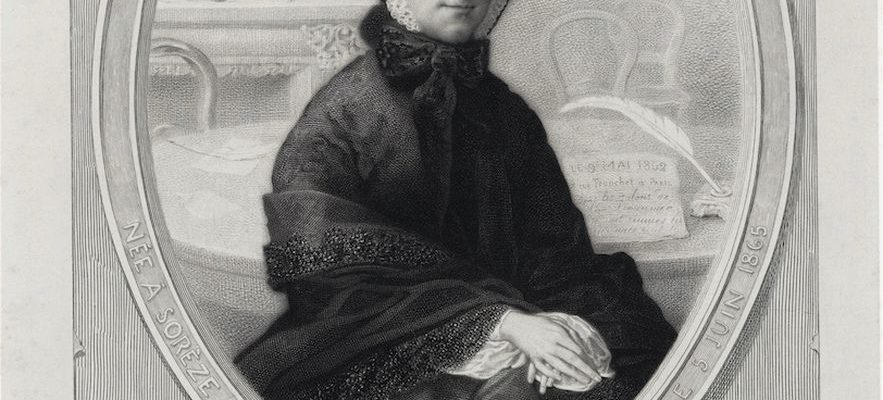Intimate envelope of the body, the student’s clothing – witness to the first attempts at self-affirmation – goes beyond the simple game of appearances. Far from being anecdotal, the approach of the National Museum of Education (Munaé), in Rouen, touches on burning subjects of our contemporary news: gender, secularism, learning or even the fashion industry… The clothing issues within the institution, and their evolution since the 1880s which saw the birth of the French, secular and compulsory school, are thus deciphered through 250 objects and documents. Aude Le Guennec, design anthropologist at the Glasgow School of Art in Scotland, and Nicolas Coutant, deputy director of Munaé, undertook this work five years ago “in a context of politicization of clothing issues in France”.
The curators advocate in particular the recognition of clothing as a school fact: “The relationship to his outfit gives rhythm to the student’s life, even though the institution does not integrate it very much into the educational content. The learning of dressing techniques, the way of making the garment or even its diversion in the context of games are nevertheless important educational issues. From primary school, style is crucial in what student status entails: evolving in a group. And the existential question that arises from this: to blend into the crowd or to stand out? From the school of the Third Republic, which favors cloakroom and blouses, to recent confinements and its suspended interactions between schoolchildren, the relationship to clothing accompanies changes in society.
Thomas Casimir Régnault, “Portrait of Marie Juliette Elisa Lemonnier, founder of the Society for the Professional Education of Women”, 1862.
/ © National Museum of Education
Until then tolerated for girls in the event of extreme cold and worn under a skirt, trousers became feminine from the 1960s onwards with the mix in schools, while needlework prepared girls for the role of wife. and mother are becoming scarce. Later, the creation of the professional baccalaureate in 1985 marked the key stage in a process initiated in 1862 by Elisa Lemonnier, a pioneer in professional education dedicated to young girls, where the maintenance of clothing plays a key role in the women’s access to paid work.
The last decades of the 20th century saw the boundaries between generations erased, adult women’s fashion drawing inspiration from the look of the youngest, which remained a powerful vector in the construction of the genre, to the point of sometimes blurring the tracks when, in the years 2000, the hypersexualization of locker rooms is debated and that, closer to us, the LGBTI question questions the institution on its relationship to the gender dimension of clothing. Although the Education Code does not impose any obligation with regard to school uniforms, with the exception, since 2004, of those “aiming to manifest a religious affiliation”, most establishments include them in their internal regulations, most often to impose a “decent” outfit.

“Class photo: ladies of the Legion of Honor”, postcard, around 1910, Saint-Denis (Seine-Saint-Denis).
/ © National Museum of Education
While smocks remained the majority in primary school until the 1970s, before gradually disappearing, the uniform was rarely adopted by French institutions, even if it remains in a few private establishments and more frequently in the Overseas. Regularly, the subject invites itself to politicians, among whom elected officials from all sides praise the virtues of standardization abolishing social distinctions. What do the main stakeholders think? By Jules Valles (The Child) to Annie Ernaux (Years), many writers have evoked their childhood memories through the prism of their schoolgirl outfits. At Munaé, the curators also collect self-portraits made in class, which attest to the importance of the theme for today’s students. They convey both the reality of what they wear and the ideal outfit, the object of their sartorial fantasies.
